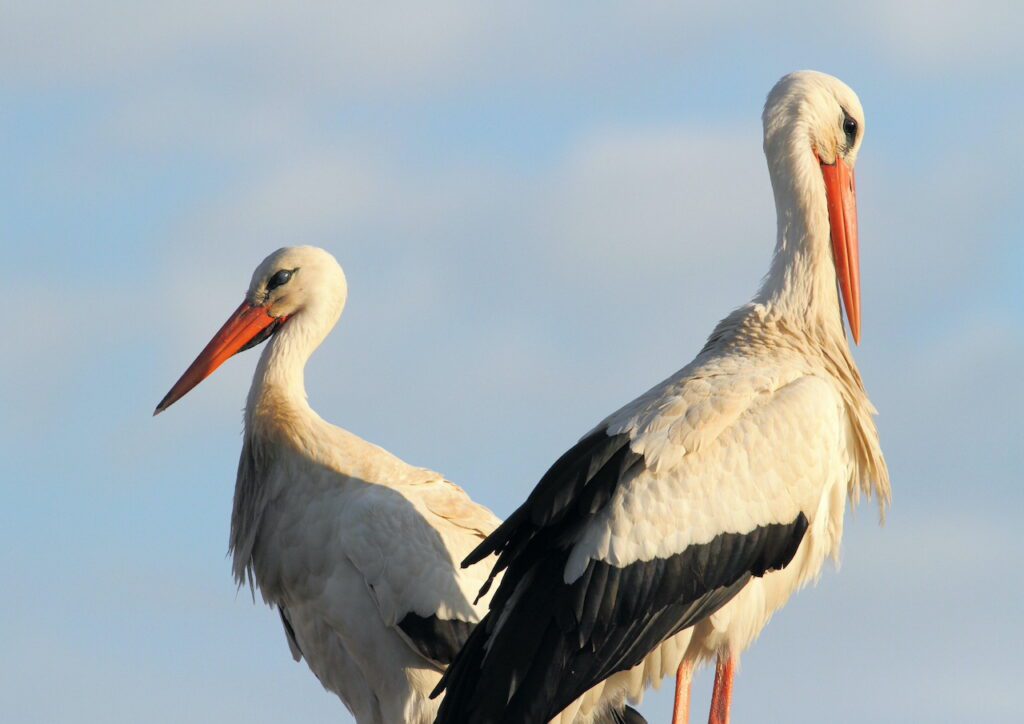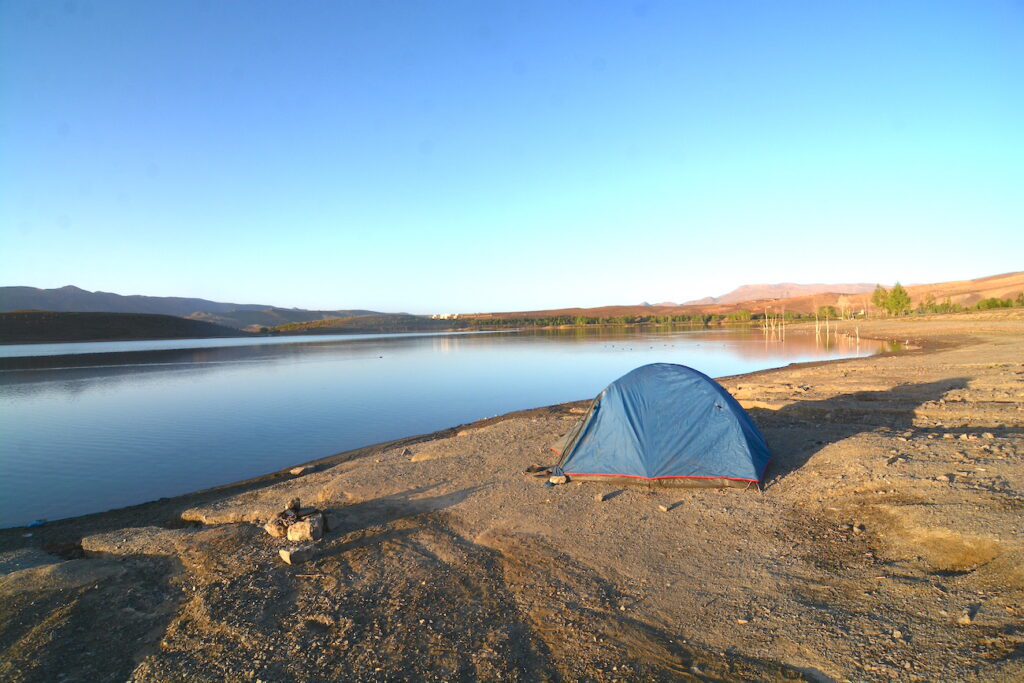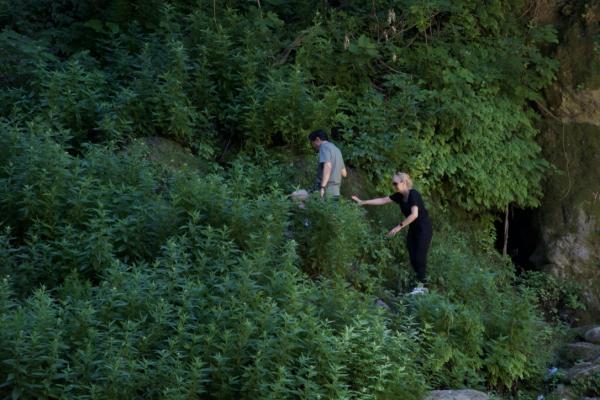The White Stork of Morocco: A Symbol of Hope, Migration, and Coexistence
By Morocco Green Tours – Travel Sustainably, Connect Deeply
In the heart of Morocco’s diverse landscapes—where snow-dusted mountains meet desert sands and wetlands border ancient medinas—soars one of the country’s most iconic and graceful migratory birds: the White Stork (Ciconia ciconia).
These long-legged, long-necked birds with striking white plumage and black wingtips are more than just a beautiful sight. They are powerful symbols of harmony with nature, and in many ways, ambassadors of the values we cherish at Morocco Green Tours: respect for wildlife, celebration of biodiversity, and commitment to sustainable travel.

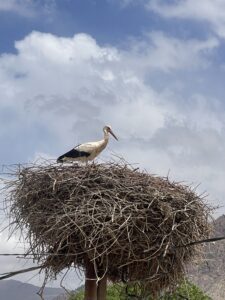
A Seasonal Visitor: Morocco’s Role in the White Stork’s Journey
Every year, thousands of white storks make a remarkable journey from Europe to North Africa. Morocco serves as both a winter refuge and a stopover site along their migration route. The birds are typically seen from autumn to early spring, gathering near wetlands, farmland, and even urban rooftops.
One of the most famous places to witness them is Marrakech’s El Badi Palace, where storks nest proudly on the ruined red walls, overlooking the medina. They also favor the Souss-Massa National Park, Merja Zerga lagoon, and the Middle Atlas lakes, all havens for birdwatchers and nature lovers.
Cultural Significance: A Bird of Blessings
In Moroccan folklore, the white stork is considered a sacred bird. Traditionally, harming a stork was taboo, and its presence was associated with good fortune and spiritual protection. Some local legends even say that storks carry human souls or were once humans themselves.
This reverence shows how deeply connected Moroccan culture is to the natural world, reminding us of the importance of preserving such beliefs through sustainable education and ecotourism.
Conservation and the Role of Sustainable Travel
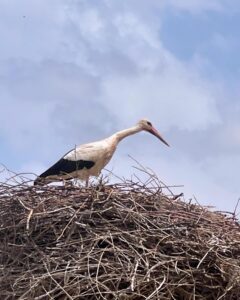
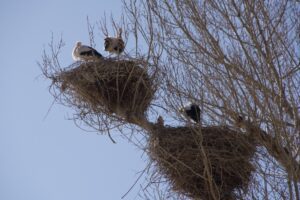
While stork populations are currently stable, threats like habitat destruction, plastic pollution, and climate change affect their migratory patterns and nesting grounds. In some regions, storks have begun to alter their migration behavior, staying year-round in areas where food waste is abundant, often near landfills.
At Morocco Green Tours, we aim to raise awareness about the fragile balance between tourism, nature, and community well-being. By offering eco-friendly birdwatching tours, supporting local conservation projects, and minimizing waste during our trips, we contribute to protecting the habitats that white storks—and many other species—rely on.
Where to See the White Stork in Morocco
If you’re a bird enthusiast or simply wish to connect more deeply with Morocco’s natural beauty, here are a few destinations where you can spot white storks during your journey:
- El Badi Palace, Marrakech – nesting storks are visible year-round
- Souss-Massa National Park – a biodiversity hotspot near Agadir
- Ifrane and the Middle Atlas – rich in wetlands and highland meadows
- Merja Zerga Lagoon, near Moulay Bousselham – prime for birdwatching
- Rabat’s Chellah Necropolis – storks nest among Roman ruins
Travel Responsibly, Observe Respectfully
We encourage all our guests to observe wildlife from a distance, avoid disturbing nesting sites, and support local guides who prioritize ethical nature tourism. Our journeys are designed to bring you closer to Morocco’s hidden wonders while leaving a positive footprint behind.
So next time you see a white stork gliding overhead or nesting on an ancient minaret, take a moment to appreciate not just the bird—but the story it tells about migration, coexistence, and the magic of Morocco’s wild heritage.
Join Us on a Sustainable Journey
At Morocco Green Tours, we believe travel can be a force for good. Let’s protect the landscapes that storks and humans both call home.
Contact us to plan your eco-friendly tour today.

